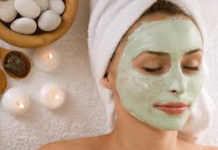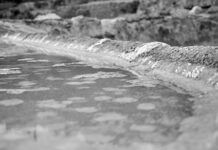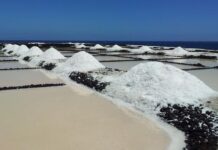Exfoliation helps to remove dead skin cells from the surface of your skin. Regular exfoliation may also help prevent clogged pores and stimulate the production of collagen. The result? Firmer, smoother, more radiant skin that’s less prone to breakouts.
If you like knowing what you put on your skin, a homemade facial scrub may be an option. Another bonus is that they’re quick and easy to make, and you probably already have all the ingredients you need.
Keep reading to learn more about the benefits of exfoliation, and how to make your own DIY facial scrub with safe ingredients.
What are the benefits of a facial scrub?
When done correctly, exfoliating your skin with a facial scrub may offer the following benefits:
- Smoother skin. Exfoliators help to get rid of dead skin cells that your body hasn’t fully shed yet. This can help give you a smoother, brighter, more even complexion.
- Improved circulation. Stimulating the surface of your skin can boost blood flow which, in turn, may also help give your skin a healthier glow.
- Unclogged pores. Facial exfoliation can remove dead skin cells and oils that would otherwise clog your pores and lead to breakouts.
- Better absorption. By removing a buildup of dead skin cells and other debris, your skin is able to absorb other products more effectively.
Are there ingredients to avoid?
Because the skin on your face is more sensitive and delicate than the skin on your body, facial scrubs should contain finer particles than body scrubs.
For instance, sugar scrubs, which are popular body exfoliators, are too harsh for your face. The same goes for sea salt, nutshells, and coffee grounds. These particles are typically too coarse for facial skin.
Using ingredients that are too rough for your skin can cause red, irritated skin. In some cases, coarse particles may even scratch or break the skin.
What ingredients work well?
To prevent skin irritation or scratching, you’ll want to use a mild exfoliator with smaller, finer particles. Some options include:
- very finely ground organic oatmeal
- cinnamon
- ground rice
- baking soda, in small quantities
These are all physical exfoliators. That means you need to scrub or rub your skin with these ingredients for them to work.
In addition to physical exfoliators, there’s also the option of using a chemical exfoliator. This type of ingredient uses natural chemicals and enzymes to remove dead skin cells and renew your skin.
Some types of chemical exfoliator ingredients you can use in a DIY face scrub include:
- milk and yogurt, which contain lactic acid
- apples, which contain malic acid
- pineapple, a rich source of vitamin C and citric acid
- mangoes, a rich source of vitamin A
What do you need to make a facial scrub?
Homemade facial scrubs typically don’t need many ingredients. Before you make the scrub, make sure you have the following on hand:
- a carrier oil that allows for mixing and moisturizing, such as jojoba, coconut, or almond oil
- a coffee grinder or food processor if you’re using oatmeal
- measuring spoons or measuring cups
- mixing bowl
- mixing spoon
- essential oils, if desired
You’ll also want to get an airtight container you can seal. This allows you to store your scrub and use it again at a later date.
1. Oatmeal and yogurt scrub
Oats aren’t just for breakfast — they’re for skin care, too. In fact, oats can be found in many types of skin care products. It’s usually listed as “colloidal oatmeal” on these products.
According to research, oatmeal contains compounds called phenols, which have antioxidant activity. It also has anti-inflammatory properties to soothe the skin.
Yogurt, which has natural lactic acid, can help enhance exfoliation, while jojoba oil can add moisture without clogging pores.
This scrub works well for combination skin.
Ingredients
- 2 tbsp. finely ground rolled oats (organic if possible)
- 1 tbsp. organic plain Greek yogurt
- 1 tbsp. jojoba or coconut oil
Directions
- Grind oats into a fine powder using a coffee grinder or food processor.
- Mix all ingredients in a mixing bowl.
- Apply to cleansed skin in gentle circles for about 30 to 60 seconds.
- Rinse the scrub from your skin with lukewarm water.
- Spoon any remaining mixture into an airtight container and store in the refrigerator.
2. Honey and oats scrub
Honey is a great addition to a facial scrub due to its ability to balance bacteria on your skin. This makes it an effective ingredient against acne. Honey is both a natural exfoliant and moisturizer.
Ingredients
- 1/4 cup plain oats, uncooked and finely ground
- 1/8 cup raw honey
- 1/8 cup jojoba oil
Directions
- Grind oats into a fine powder using a coffee grinder or food processor.
- Warm the honey for a few seconds in the microwave so it’s easier to mix.
- Mix all ingredients in a bowl.
- Apply to the skin in gentle circles for about 60 seconds.
- Rinse the scrub with lukewarm water.
- Spoon the remainder of the scrub in an airtight container and store in the refrigerator.
3. Apple and honey scrub
This scrub uses honey to nourish and moisturize your skin. Apples — which have natural fruit acids and enzymes — also exfoliate. The fruit acids combined with the antibacterial properties of honey make it a good choice for oily or acne-prone skin.
Ingredients
- 1 ripe apple, peeled and pitted
- 1/2 tbsp. raw organic honey
- 1/2 tsp. jojoba oil
Directions
- Puree the apple in a food processor until it’s smooth but not runny.
- Warm the honey for a few seconds in a microwave so it’s easier to mix.
- Mix all ingredients in a bowl.
- Apply in circular motions to your face for 30 to 60 seconds.
- Allow the scrub to sit on your skin for 5 minutes for further moisturizing benefits.
- Rinse clean with lukewarm water.
- Spoon any remaining mixture into a container and store in the refrigerator.
4. Banana oatmeal scrub
If you’re not a fan of using oils on your face, try this scrub, which uses banana as a base instead.
Bananas contain nutrients like potassium, vitamin C, and traces of vitamin A. They also contain silica, a mineral element and relative of silicone, which can help boost collagen production in your skin.
This scrub is well-suited for oily skin.
Ingredients
- 1 ripe banana
- 2 tbsp. finely ground oatmeal
- 1 tbsp. organic plain Greek yogurt
Directions
- Smash the banana with a fork until it’s smooth but not runny.
- Grind oats in a food processor to a fine powder.
- Mix all ingredients in a bowl.
- Apply to the skin in circular motions for 30 to 60 seconds.
- Rinse the scrub clean.
- Spoon any leftover mixture into an airtight container and store in the refrigerator.
How often should you use a facial scrub?
While there are many benefits to facial exfoliation, you don’t want to over-exfoliate your skin.
If you have oily skin, it’s probably safe to exfoliate up to three times a week. If you have sensitive, acne-prone, or dry skin, once or twice a week is sufficient.
Safety tips
As with any scrub, it’s possible that you could have an allergic reaction to one or more ingredients. Before applying an ingredient to your face, apply a small test patch to the inside of your elbow. If your skin doesn’t react to the ingredient, it’s probably safe to use it on your face.
It’s best to avoid exfoliating if you have sunburned, chapped, or reddened skin. If you have areas of broken skin, like a cut or an irritated acne blemish, avoid using the scrub on these areas.
The bottom line
Facial scrubs are a good way of removing dead skin cells from the surface of your skin. Exfoliating your skin can also prevent clogged pores and boost circulation and collagen production.
Facial scrubs are easy to make at home and don’t require many ingredients. However, it’s important to only use ingredients that are safe for facial exfoliation. Some types of exfoliants, like sugar, sea salt, and nutshells, are too coarse for the skin on your face.
If you aren’t sure if an ingredient is suitable for your skin, talk to your dermatologist first to get the all clear before use.
Last medically reviewed on February 25, 2020
4 sourcesexpandedHealthline has strict sourcing guidelines and relies on peer-reviewed studies, academic research institutions, and medical associations. We avoid using tertiary references. You can learn more about how we ensure our content is accurate and current by reading our editorial policy.
- How to safely exfoliate at home. (n.d.).
aad.org/skin-care-secrets/safely-exfoliate-at-home - Kurtz ES, et al. (2007). Colloidal oatmeal: History, chemistry, and clinical properties.
ncbi.nlm.nih.gov/pubmed/17373175 - Mandal MD, et al. (2011). Honey: Its medicinal property and antibacterial activity.
ncbi.nlm.nih.gov/pmc/articles/PMC3609166/ - Zeichner JA. (2016). The use of lipohydroxyl acid in skin care and acne treatment.
ncbi.nlm.nih.gov/pmc/articles/PMC5300717/









![Effect of sea mud compresses from Messolonghi lagoon as a treatment for cellulite [Experimental study]](https://saltandmud.gr/wp-content/uploads/2021/08/unnamed-218x150.png)










